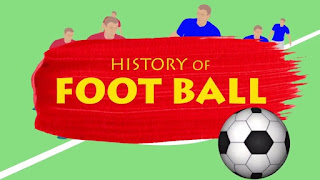How Cano Cristales River Produced A Colours
How Amazing Liquid Rainbow River In Colombia:
Caño Cristales (English: Crystal Channel) is Colobian river located in the Serrania de la Macarena province of Meta, and is a tributary of the Guayabero River. The river is commonly called the "River of Five Colours" or the "Liquid Rainbow," and is noted for its striking colors.The bed of the river from the end of July through November is variously colored yellow, green, blue, black, and especially red, the last caused by Macarenia clavigera plants (family Podostemaceae )on the riverbed The Liquid Rainbow is caused by a unique phenomena: a red plant – Macarenia clavigera – growing in the riverbed. Other colors come from black rocks, green algae, blue water and yellow sand, producing an iridescent effect. The river also features waterfalls, pools and caverns, making it even more dramatic. Furthermore – there are no fish or other creatures, visitors can enjoy uninterrupted bathing in Caño Cristales.One of the reasons the Caño Cristales river is so special and produces such a unique feature, is because it’s surrounded by three very diverse ecosystems: the Andes, Amazon rainforests, and the plains of the Eastern Llanos. Therefore, the diversity of animal species, flora and fauna, and geological conditions all contribute to the area’s special qualities.
There are many potholes along the river, this is due to the fact that the river is fast-flowing, with quite a few rapids. How the potholes are formed is pretty rad…basically when a big rock falls into a small pit the current forces it to naturally rotate and carve the pit into a larger pothole.
How To Get There ...
That is quite a challenging task. First get to Villavicencio from Bogota by plane or bus. From Villavicencio catch a plane to La Macarena. From here you can hire a guide, that would lead you to the river.
The Liquid Rainbow is caused by a unique phenomena: a red plant – Macarenia clavigera – growing in the riverbed. Other colors come from black rocks, green algae, blue water and yellow sand, producing an iridescent effect. The river also features waterfalls, pools and caverns, making it even more dramatic. Furthermore – there are no fish or other creatures, visitors can enjoy uninterrupted bathing in Caño Cristales.One of the reasons the Caño Cristales river is so special and produces such a unique feature, is because it’s surrounded by three very diverse ecosystems: the Andes, Amazon rainforests, and the plains of the Eastern Llanos. Therefore, the diversity of animal species, flora and fauna, and geological conditions all contribute to the area’s special qualities.
There are many potholes along the river, this is due to the fact that the river is fast-flowing, with quite a few rapids. How the potholes are formed is pretty rad…basically when a big rock falls into a small pit the current forces it to naturally rotate and carve the pit into a larger pothole.
How To Get There ...
That is quite a challenging task. First get to Villavicencio from Bogota by plane or bus. From Villavicencio catch a plane to La Macarena. From here you can hire a guide, that would lead you to the river.
VERY BEAUTIFUL RIVER IN THE WORLD YOU SHOULD VISIT THERE

………………….
Qué Asombroso Río Arcoíris Líquido En Colombia:
Caño Cristales (en inglés: Crystal Channel) es un río colobiano ubicado en la provincia de Meta de la Serranía de la Macarena, y es un afluente del río Guayabero. El río se llama comúnmente el "Río de los Cinco Colores" o el "Arco Iris Líquido", y se caracteriza por sus llamativos colores. El lecho del río desde finales de julio hasta noviembre es de varios colores amarillo, verde, azul, negro, y especialmente rojo, el último causado por las plantas de Macarenia clavigera (familia Podostemaceae) en el lecho del río.
El Rainbow Rainbow es causado por un fenómeno único: una planta roja - Macarenia clavigera - que crece en el lecho del río. Otros colores provienen de rocas negras, algas verdes, agua azul y arena amarilla, produciendo un efecto iridiscente. El río también cuenta con cascadas, piscinas y cavernas, lo que lo hace aún más dramático. Además, no hay peces u otras criaturas, los visitantes pueden disfrutar de un baño ininterrumpido en Caño Cristales. Una de las razones por las que el río Caño Cristales es tan especial y produce una característica tan única, es porque está rodeado por tres ecosistemas muy diversos: los Andes, Selvas amazónicas y llanuras de los Llanos Orientales. Por lo tanto, la diversidad de especies animales, flora y fauna, y las condiciones geológicas contribuyen a las cualidades especiales del área.
Hay muchos baches a lo largo del río, esto se debe al hecho de que el río fluye rápidamente, con bastantes rápidos. La forma en que se forman los baches es bastante radical ... básicamente, cuando una roca grande cae en un pozo pequeño, la corriente la obliga a rotar naturalmente y esculpir el pozo en un pozo más grande.
Hay muchos baches a lo largo del río, esto se debe al hecho de que el río fluye rápidamente, con bastantes rápidos. La forma en que se forman los baches es bastante radical ... básicamente, cuando una roca grande cae en un pozo pequeño, la corriente la obliga a rotar naturalmente y esculpir el pozo en un pozo más grande.
Cómo Llegar Allá .
Esa es una tarea bastante desafiante. Primero llega a Villavicencio desde Bogotá en avión o autobús. Desde Villavicencio tomar un avión a La Macarena. Desde aquí puedes contratar un guía que te lleve al río.
RIO MUY HERMOSO EN EL MUNDO QUE DEBES VISITAR ALLÍ …




Comentarios
Publicar un comentario